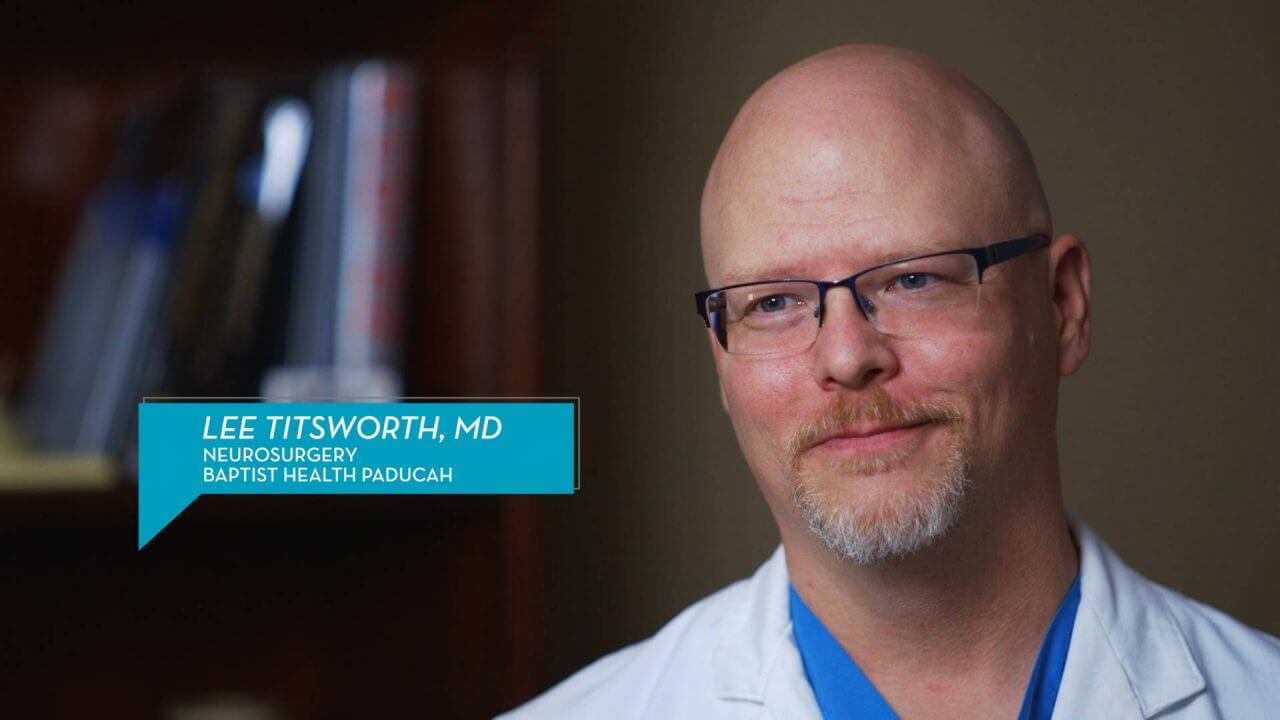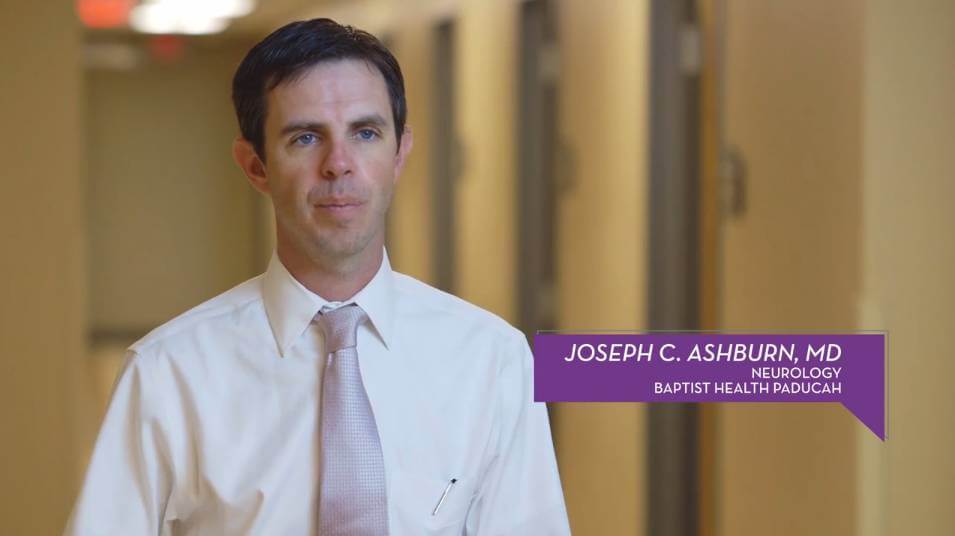Scoliosis Treatment Options at Baptist Health: Surgical and Non-Surgical
Baptist Health Paducah: Scoliosis Treatment Options
Neurosurgeon Lee Titsworth, MD, explains how scoliosis, or curvature of the spine, is diagnosed and treated, describing when surgery is needed and how it’s performed.
Scoliosis Treatment Options Health Talks Transcript
Lee Titsworth, MD, Neurosurgery
Everybody normally has curves in their spine. They have a curve at the bottom of their spine, the middle of their spine, and top of their spine. But, when those curves either get too large or turn to the side, that is called scoliosis.
Early screening is extremely important because if we can catch the curves early, we can treat them with a brace rather than requiring surgery. Early warning signs of scoliosis include a curvature of the spine that you can see, abnormal shoulders that are at different heights, hips that are different heights, or when a child bends over, you’ll notice that one rib cage is higher than the other. Treatment all depends on the level of curvature of the spine. If the curves are greater than 50 degrees or progress over time, then those will generally require surgery. The surgery for scoliosis basically involves straightening the spine. We make an incision in the back. We will put titanium screws into the bones of the spine. We’ll use those screws to help pull the vertebral bodies back into alignment, and then we’ll secure everything by putting in two large titanium rods, and then laying down bone to help the spine regrow into a normal position. The prognosis after treatment is return to full life, full activities.
At Baptist Health Paducah, our neurologists and neurosurgeons understand that neurological diagnoses can affect many facets of one’s life, as the neurologic system is one of the most widespread and diffuse in the human body. Learn more about our Comprehensive Neurological, Neurosurgical, and Stroke Care services.



